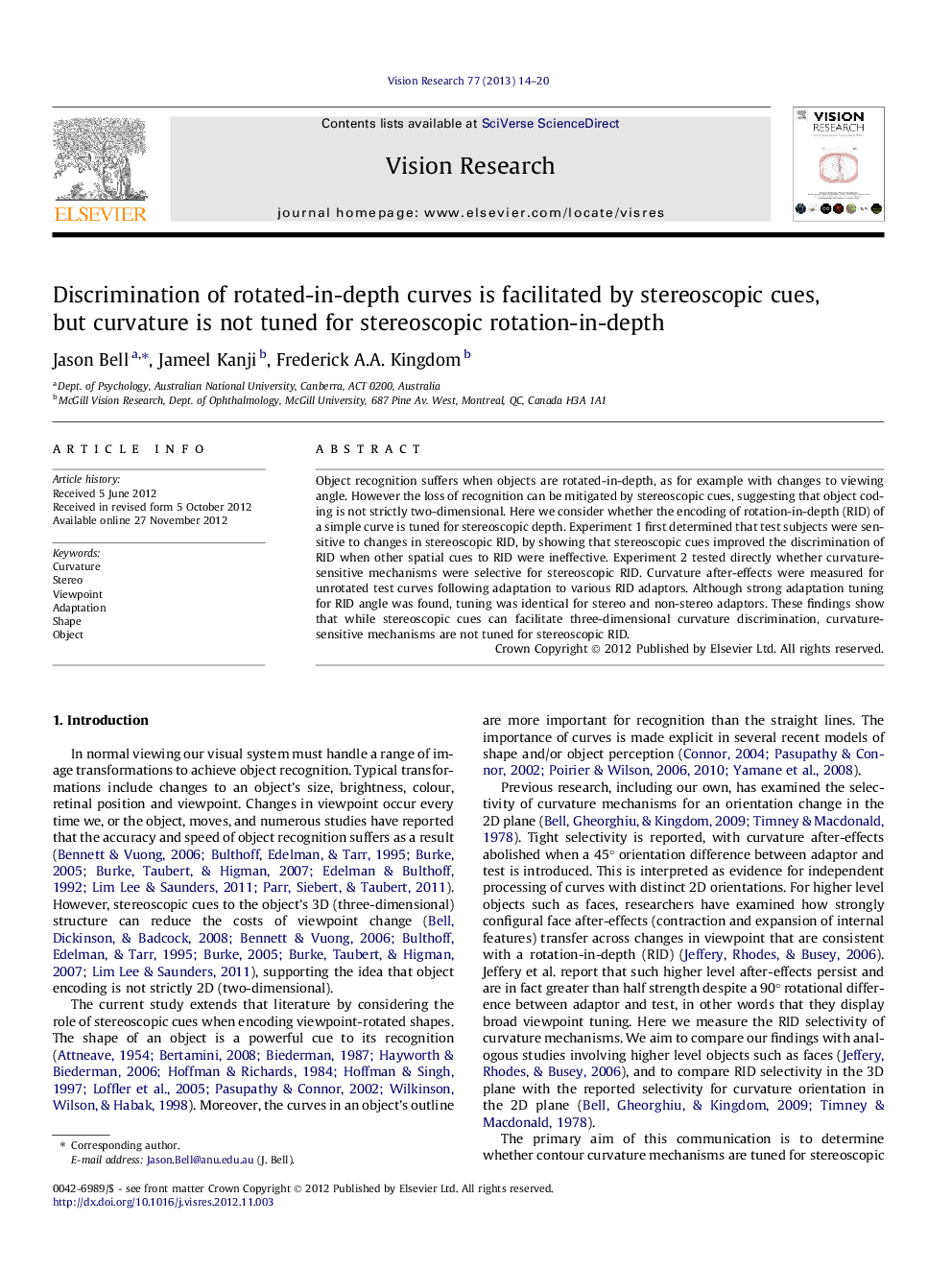| کد مقاله | کد نشریه | سال انتشار | مقاله انگلیسی | نسخه تمام متن |
|---|---|---|---|---|
| 6203616 | 1603217 | 2013 | 7 صفحه PDF | دانلود رایگان |
Object recognition suffers when objects are rotated-in-depth, as for example with changes to viewing angle. However the loss of recognition can be mitigated by stereoscopic cues, suggesting that object coding is not strictly two-dimensional. Here we consider whether the encoding of rotation-in-depth (RID) of a simple curve is tuned for stereoscopic depth. Experiment 1 first determined that test subjects were sensitive to changes in stereoscopic RID, by showing that stereoscopic cues improved the discrimination of RID when other spatial cues to RID were ineffective. Experiment 2 tested directly whether curvature-sensitive mechanisms were selective for stereoscopic RID. Curvature after-effects were measured for unrotated test curves following adaptation to various RID adaptors. Although strong adaptation tuning for RID angle was found, tuning was identical for stereo and non-stereo adaptors. These findings show that while stereoscopic cues can facilitate three-dimensional curvature discrimination, curvature-sensitive mechanisms are not tuned for stereoscopic RID.
⺠Stereoscopic cues facilitate recognition of viewpoint rotated objects. ⺠We tested the role of stereoscopic cues in the perception of rotated-in-depth (RID) curves. ⺠Stereoscopic cues can facilitate judgments of RID curves. ⺠Stereoscopic cues are not used to encode RID curves.
Journal: Vision Research - Volume 77, 25 January 2013, Pages 14-20
